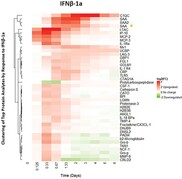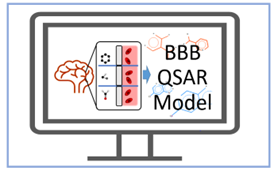|
-
COVID-19-Related Efforts
-
Regulatory Science in Action
-
In Press
-
Upcoming Events
-
Career Opportunities
|
|
|
The FDA is engaged in numerous activities to protect and promote public health during the COVID-19 pandemic. For CDER, these efforts include accelerating development of treatments for COVID-19, maintaining and securing drug supply chains, providing guidance to stakeholders, advising developers on how to handle clinical trial issues and keeping the public informed. Previous updates on some of CDER’s efforts related to drugs and COVID-19 can be found in the 2020 and the 2021 issues of the newsletter (click here to access the 2020 and 2021 issues) and in the webpages below:
Some recent updates are provided below:
COVID-19 APPROVALS, EMERGENCY USE AUTHORIZATIONS, AND UPDATES
-
FDA authorizes Gohibic (vilobelimab) injection for the treatment of COVID-19
April 4, 2023: FDA has issued an emergency use authorization (EUA) for the use of Gohibic (vilobelimab) injection for the treatment of COVID-19 in hospitalized adults when initiated within 48 hours of receiving invasive mechanical ventilation or extracorporeal membrane oxygenation (artificial life support). Learn more.
-
FDA revises the Letters of Authorization for two EUAs, Paxlovid and Lagevrio, to remove the requirement for positive test results to prescribe these products.
February 1, 2023: The agency continues to recommend that providers use direct SARS-CoV-2 viral testing to help diagnose COVID-19. However, in rare instances, individuals with a recent known exposure who develop signs and symptoms consistent with COVID-19 may be diagnosed by their health care provider as having COVID-19 even if they have a negative direct SARS-CoV-2 viral test result. In such instances, their health care provider may determine that treatment with authorized therapeutics may be appropriate if the patient reports mild-to-moderate symptoms of COVID-19 and is at high risk for progression to severe COVID-19, including hospitalization or death, and the terms and conditions of the product’s authorization are met. Learn more.
|
|
|
February 23, 2023: CDER Publishes Annual Reports for 2022 That Describe Scientific Progress from CDER Offices and Divisions
FDA published annual reports from CDER offices and budgets from CDER offices and divisions. Learn more.
January 31, 2023: FY22 GDUFA Science & Research Report
The FY 2022 GDUFA Science & Research Report describes research activities during FY 2022 that support the development and assessment of generic drug products and provides summaries and highlights of the scientific progress and research outcomes for the program’s 13 selected topic areas. The GDUFA Science and Research Program supports the development of innovative methodologies and efficient tools to help demonstrate generic drug product quality and equivalence. In this way, the program supports the development of, and access to, safe, effective, and high-quality generic drug products for the American public.
Research Outcomes Reports from the Office of New Drugs (OND)
The reports below summarize outcomes from OND-funded Extramural Research and ORISE fellowships generated in fiscal year 2021 (FY21).
December 2022- January 2023: CDER researchers discuss critical issues in drug development and evaluation in their reports on recent scientific workshops
PODCASTS
CDER Small Business and Industry Assistance Chronicles Podcasts
SPOTLIGHT ON CDER SCIENCE
Pharmacodynamic Biomarkers: Their Role in Biosimilar Product Development

CDER researchers are developing scientific methodologies and approaches to facilitate use of biomarkers to demonstrate biosimilarity between a biologic product and a proposed biosimilar product without the need for costly, time consuming, and potentially unfeasible studies based on clinical endpoints. For example, using a dose-ranging response design for a trial in healthy volunteers they recently evaluated changes in the serum levels of two proteins in response to the cholesterol-lowering biologics alirocumab and evolocumab. A similar approach, supplemented with modeling and simulation, was used to evaluate changes in circulating eosinophils following administration of the interleukin-5 inhibitors mepolizumab and reslizumab. In another study, proteomic approaches were used to screen hundreds of proteins in blood to identify suitable biomarkers for comparing biosimilar versions of interferon-based therapeutics. Dose selection is an important consideration when designing studies to compare a biologic (or drug) with the reference product, particularly when the pharmacokinetic profile is non-linear. CDER researchers are advancing computational modeling approaches for informing dose selection and promoting efficient biosimilar development in such cases. Learn more about CDER’s research to help developers demonstrate biosimilarity.
|
|
|
REGULATORY SCIENCE IMPACT STORIES |
|
Artificial Intelligence/ Machine Learning Assisted Image Analysis for Characterizing Biotherapeutics
 |
|
Artificial intelligence (AI) and/or machine learning has enabled processing of large collections of images with high efficiency and accuracy. An AI-based methodology evaluated in a recent CDER study could potentially be applied to a range of pharmaceuticals and biopharmaceuticals to monitor changes in product attributes (e.g., particles/aggregates) during manufacturing. This analytical approach combines flow microscopy with neural network-based image analysis and can detect small shifts in protein aggregate populations due to unknown process upset and thus provide potential strategies for monitoring product quality attributes. Learn more. |
|
|
Development of QSAR Models to Predict Blood-brain Barrier Permeability
 |
|
Typically, studies in animals are used for to determine whether a new drug is likely to cross the blood-brain barrier, but these experiments are costly and time consuming. CDER researchers and collaborators developed two predictive quantitative structure-activity relationship (QSAR) models based on data from experiments in rodents in which a drug’s ability to cross the blood-brain barrier had been measured. Performance of the computational models ranged from 70 to 75% in sensitivity, 70-72% in negative predictivity, and 78-86% in coverage. Predictive performance was further improved to 80% in sensitivity and 93% in coverage by combining predictions across the two models. Learn more. |
CDER RESEARCH AREAS, TOOLS, AND TRAININGS
CDER’s diverse research programs address a wide variety of critical areas that affect drug safety and manufacturing quality. Learn more at https://www.fda.gov/drugs/science-and-research-drugs/cders-regulatory-science-program-areas.
Research Tools and Resources
Developing and sharing knowledge with researchers from the public and private sectors is at the heart of what Center for Drug Evaluation and Research (CDER) scientists do. Learn more about scientific tools and resources at CDER/FDA at https://www.fda.gov/drugs/science-and-research-drugs/research-tools-and-resources.
Office of New Drugs Regulatory Science Research
The Office of New Drugs (OND)-led regulatory science research projects are designed to address knowledge gaps identified during regulatory review of investigational or new drug applications. Learn more about the research programs at https://www.fda.gov/about-fda/center-drug-evaluation-and-research-cder/office-new-drugs-regulatory-science-research.
Office of Generic Drugs Science and Research
The Office of Research and Standards within the FDA's Office of Generic Drugs (OGD) supports the Science and Research program established under the Generic Drug User Fee Amendments (GDUFA). In collaboration with industry and the public, FDA creates an annual list of regulatory science initiatives on generic drugs. Learn more at https://www.fda.gov/drugs/generic-drugs/science-research.
CDER/CDER Learn Training and Education
Information on learning opportunities for healthcare professionals, academia, students, and consumers can be accessed at https://www.fda.gov/Training/ForHealthProfessionals/default.htm.
|
|

This section provides highlights of select CDER research recently published in scientific journals. Click here to see the complete FDA publication list. To view CDER publications on this site, select Drugs under the Centers category
|
Use of Single-Arm Trials for US Food and Drug Administration Drug Approval in Oncology, 2002-2021
Researchers and reviewers in CDER and FDA’s Oncology Center of Excellence summarize FDA’s experience in using data from single-arm trials to support approval of new drugs and biologics for malignant hematology and oncology indications during the last 20 years. They also discuss the advantages and the challenges associated with this approach. Learn more.
An Alternate Process for the Solid-Phase Synthesis and Solid-Phase Purification of Synthetic Nucleic Acid Sequences
CDER researchers report on a simple and yet efficient strategy for the synthesis and purification of nucleic acid sequences. Learn more.
A Bioanalytical Method for Quantification of N-nitrosodimethylamine (NDMA) in Human Plasma and Urine with Different Meals and following Administration of Ranitidine
CDER researchers describe their development and validation of a low-sample-volume, low- temperature method to detect and quantitate the probable carcinogen NDMA in human urine or plasma. Learn more.
Improved GSimp: A Flexible Missing Value Imputation Method to Support Regulatory Bioequivalence Assessment
CDER researchers describe a new approach to address missing values in bioequivalence studies for proposed generic drugs that in simulation studies improved accuracy. Learn more.
Innovation in biosimilars. In a special of Clinical Pharmacology and Therapeutics, contributors from FDA and the drug development community identify various aspects of biosimilar development where clinical pharmacology and related disciplines can develop innovative approaches, including through the use of PD biomarkers, modeling and simulation, and analyses connecting product quality characteristics to clinical performance. Learn more.
|
|
|
Information on upcoming meetings, conferences, and workshops sponsored or co-sponsored by CDER, click here. Some of the events are listed below:
May 10, 2023: FDA-CRCG Interactive Training Course: DDCP 101 – Identifying, Developing, and Evaluating Generic Drug Device Combination Products (DDCP)
The purpose of this training is to clarify FDA’s regulatory expectations and practices for comparative assessment of the device-user interfaces of a proposed generic DDCP and its reference listed drug (RLD). Learn more.
May 11 - 12, 2023: FDA Public Workshop: FY 2023 Generic Drug Science and Research Initiatives
Purpose: to provide an overview of the status of current science and research initiatives for generic drugs and an opportunity for public input on these and future initiatives. Learn more.
June 15, 2023: FDA-CRCG Workshop on Mitigation Strategies for Nitrosamine Drug Substance Related Impurities: Quality and Bioequivalence Considerations for Generics
Purpose: to discuss the risks of nitrosamine adducts (nitrosamine drug substance related impurities) forming in certain drug products and strategies to mitigate these risks. Learn more.
October 12, 2023: FDA-CRCG Workshop on Advances in PBPK Modeling and its Regulatory Utility for Oral Drug Product Development
Purpose: to discuss the challenges, experiences, and advances for the development of oral PBPK modeling to support the establishment of bio-predictive in vitro testing and to address risks associated with the extrapolation of bioequivalence in various contexts, and from other risk-based bioequivalence assessments for oral products. Learn more.
November 2 – 3, 2023: FDA-CRCG Workshop on Comparative User Interface Assessment for Drug-Device Combination Products: Updates and Challenges in Demonstrating Generic Substitutability
Purpose: to share new information that can inform drug-device combination product (DDCP) development and provide a forum to identify and discuss generic DDCP development challenges, and to explore potential solutions. Learn more.
December 7-8, 2023: FDA-CRCG Workshop on Characterization of Complex Excipients/Formulations
Purpose: is to discuss the scientific principles and newly developed analytical methods to support characterizations of complex excipients and related complex formulations. Learn more.
|
|
Employment
FDA continues to recruit and retain a world-class workforce dedicated to protecting and promoting public health. Information on job vacancies, employment events, and hiring programs can be found by following @FDAJobs on Twitter and by visiting FDA’s LinkedIn page, Jobs at CDER, or the Career Opportunities at CDER webpage. In addition, you can contact OTS directly at CDEROTSHires@fda.hhs.gov. Help us spread the news through your social media networks!
Scientific internships and fellowships
FDA continues to recruit and retain a world-class workforce dedicated to protecting and promoting public health. Information on job vacancies, employment events, and hiring programs can be found by following @FDAJobs on Twitter and by visiting FDA’s LinkedIn page, Jobs at CDER, or the Career Opportunities at CDER webpage. In addition, you can contact OTS directly at CDEROTSHires@fda.hhs.gov. Help us spread the news through your social media networks!
|
|
|
|
|